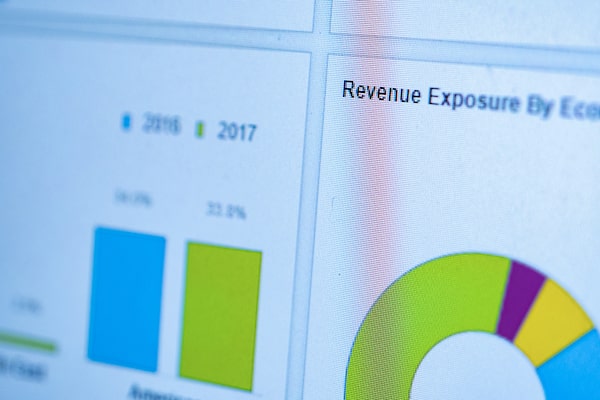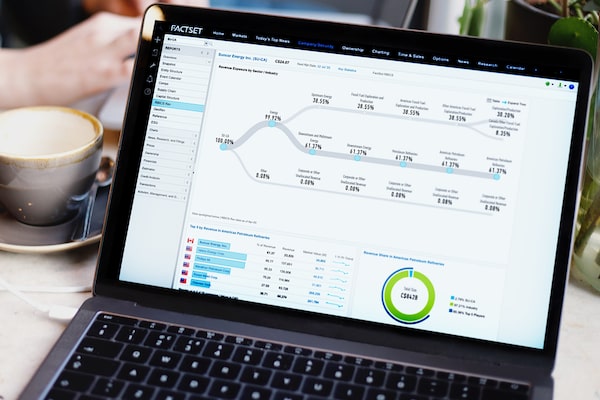
SUPPLIED
One-of-a-kind insights can be the information that generates ideas otherwise missed, ultimately setting investment professionals apart in this incredibly competitive market
Before buying or selling stocks, most investors turn to traditional data such as same-store-sales, inventory and profit margins. However, a growing number of sophisticated investors are going deeper: analyzing geographic revenue, hiring trends and satellite imagery of traffic in and around targeted retail locations.
This additional layer of key information creates a more fulsome picture of a potential investment, or divestment, is referred to as alternative data – and it’s becoming increasingly important for investment professionals seeking a competitive advantage over their peers. In fact, Chartered Professional Accountants Canada has referred to alternative data as “investors’ secret weapon.”
Alternative data, while not new, is advancing with technology and changing how investors, such as asset managers and wealth advisers, identify patterns and try to stay ahead of the market. The number and diversity of readily accessible alt-datasets has ballooned in the past decade, according to a 2019 article in the Journal of Financial Data Science.
“More and more, asset managers are looking beyond traditional data to find new ways to generate alpha and to manage their risk,” says Megan Malo, vice-president and regional director of sales for Canada and the Northeast U.S. at FactSet, a global provider of integrated financial information, analytical applications, and flexible software solutions for investment professionals.
FactSet’s Revere Business Industry Classification System is a great example. It gives investors a structured taxonomy of public and private companies across sectors, while LinkUp Raw, a third-party partner to FactSet, provides insight into employment trends from job data sourced directly from employer websites.
Alternativedata.org, a site run by a group of former buy-side and sell-side analysts, data analysts and engineers, found that total buy-side spend on alternative data jumped from $232-million in 2016 to $1.08-billion in 2019, and predicted that spend will surpass $1.7-billion in 2020.
Part of alternative data’s extraordinary rise can be attributed to the diversity of data insights available to investors.
Taking retail as an example, Ms. Malo says alternative data provide insights that can lead to other investment opportunities, such as commercial real estate investments. The ability to understand changes in the demographics of an area such as foot traffic, credit card transactions and business activity, in near real time, can provide invaluable insights to commercial real estate investments. For example, an increase in job openings for construction can help identify a region that is rapidly growing, while an increase in positions related to senior care can indicate that a region is home to an aging demographic.

SUPPLIED
Another example of key alternative data is Geographic Revenue Exposure (GeoRev) data which quantifies a company’s revenue by geography to better evaluate a company’s exposure to geopolitical risk, macroeconomic factors, and market conditions around the world. For instance, Ms. Malo says with the continued globalization of our economy, investors must think globally. To accurately quantify risk and capitalize on opportunities, it’s essential to understand where, how, and with whom firms conduct business. In other words, investors must understand the geographical and network dependencies for their investable universe. The ability to measure geographical revenue exposure and identify supply chain relationships is just the tip of the iceberg.
“With this data, you can start to tell a different story,” Ms. Malo says. “It adds an extra layer of financial insights to core market and company data to help investors make better decisions.”
Alternative data along with natural language processing is also used to analyze market sentiment. Ms. Malo says this approach has allowed investors of all types to unlock insights from quarterly investor earnings calls. For example, seeing how many negative words were used versus positive to gauge the sentiment of management and analysts has yielded predictive insights that complement or even replace existing style factors.
“All of this data, linked together, can help investors predict the performance of companies long term,” Ms. Malo says. “From there, you can determine whether to invest, change your position or diversify your assets.”
This type of information can help investors stay the course, even in the face of a global pandemic. In times of crisis and uncertainty, there are winners and losers. Opportunities abound for investors who can identify firms that are aggressively hiring in the face of a potential recession, for example.
“It’s about being proactive; getting data and making informed decisions based on that data,” she says.
Advertising feature produced by Globe Content Studio. The Globe’s editorial department was not involved.